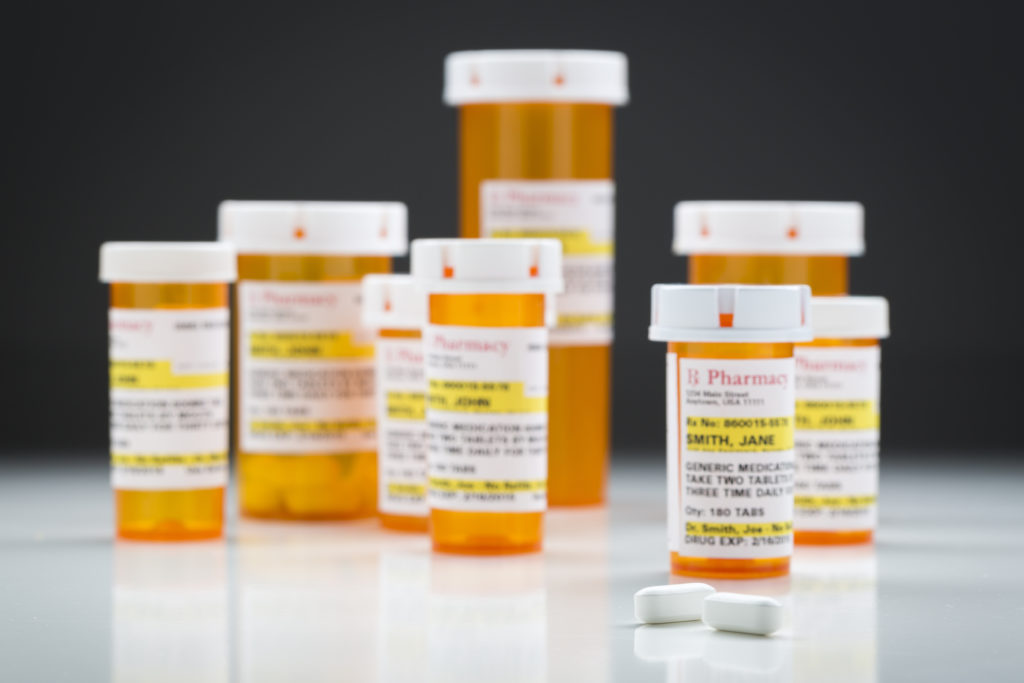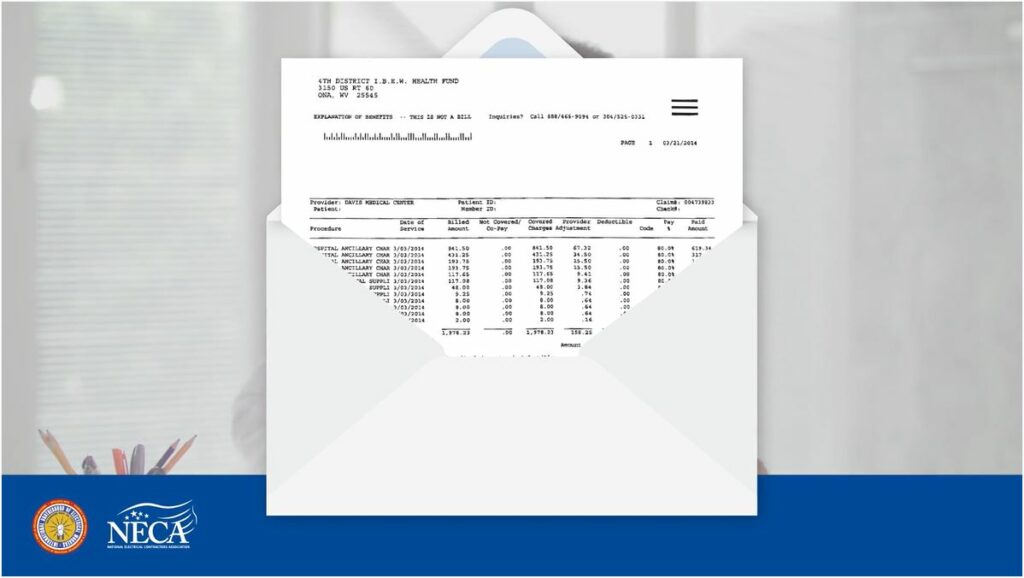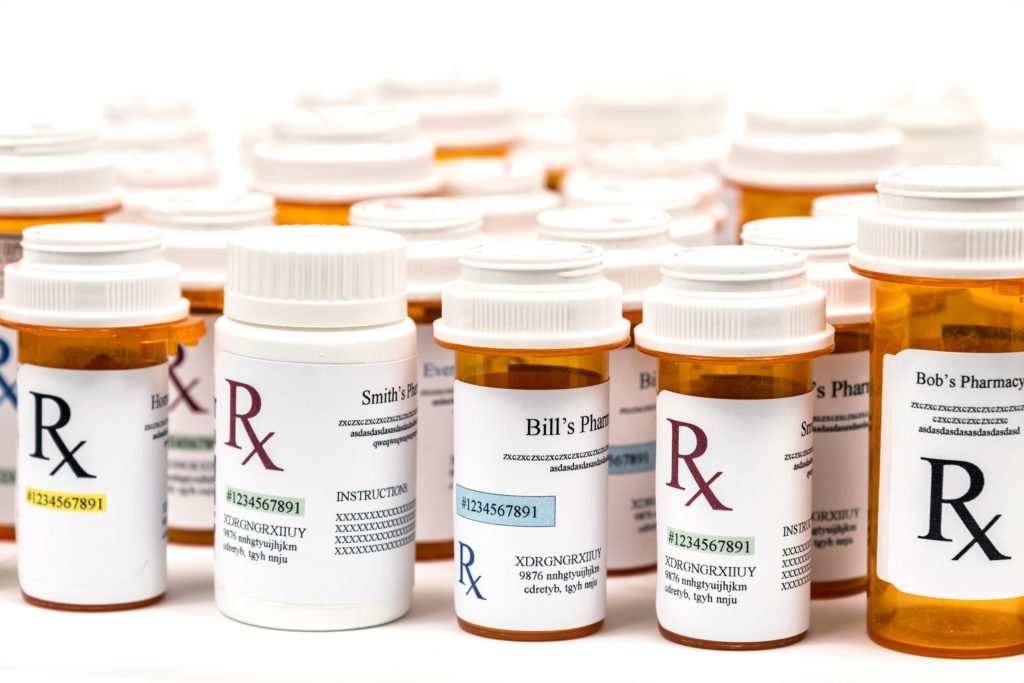
Prescription Drugs Overview
The Fund provides a prescription drug benefit under the medical plans. It is administered by Sav-Rx and only pays a benefit when a prescription is filled at a Sav-Rx participating pharmacy. The benefit level depends on the type of drug—generic, preferred brand name or non-preferred brand name—and if it is filled at a retail pharmacy or through mail order. When you are at a retail pharmacy, present your Sav-Rx identification card and pay your copay amount as applicable. Also, be sure to review the Step Therapy Program section below to see if any of your medications are subject to step therapy.
When you have your prescriptions filled at a participating Sav-Rx pharmacy, you save money. Locate participating retail pharmacies at www.savrx.com and enter in group number “IBEWD4” or call Sav-Rx at 1-866-233-IBEW.
Prescription Drug Benefits Summary
Click on the link to view the Building Trades or Flexible Choice Medical Plan prescription drug benefits summary.
How the Sav-Rx Program Works
When you become eligible to participate in the Plan, you will receive a personalized Sav-Rx Prescription Benefits ID card (with eligible family status listed). You must present your ID card, along with your doctor’s prescription, to any participating Sav-Rx pharmacy. No benefits are payable for prescriptions filled at a non-network pharmacy.
The pharmacist will fill the prescription and charge you a copay (which is the amount you pay). In addition, the pharmacist will generally ask you to sign a form indicating that you received the prescription. It is permissible for any of your eligible dependents to present your ID card with a prescription to the pharmacist and sign for receipt of the prescription.
When benefits are not payable
A point of sale purchase of a prescription is not a claim for benefits. If you elect to have your prescription filled by a pharmacy other than a participating Sav-Rx pharmacy, no benefits are payable by the Plan.
In addition, if you are not eligible for benefits at the time you contact the pharmacy, or in the event that the prescription is not a covered drug under the Plan, you must contact the Fund’s Administrative Office for additional information regarding the adverse benefit decision.
The Fund’s Administrative Office will provide you with a “Notice of the Adverse Benefit Determination,” in writing, that contains the following:
- The specific reasons for the adverse benefit determination;
- The specific reference to the Plan and/or Summary Plan Description provisions on which the adverse benefit determination was based;
- A description of any additional materials or information necessary for you to perfect your claim and an explanation of why such material or information is necessary;
- The notice of any internal guidelines or protocols used in making the decision, if applicable, and your right to receive a copy;
- A notice of your right to a written explanation of any exclusion which affects your claim; and
- A description of this Plan’s Appeals Procedure.
Out-of-Pocket Maximum
The annual out-of-pocket maximum is the most you will pay out of your own pocket for covered expenses each year. Once you meet the maximum, the Fund pays 100% of all covered costs for the rest of the year. This means that prescription drugs will be covered, as applicable, until you reach the separate, out-of-pocket maximum for your Prescription Drug Plan (see links above). Then, the Fund will pay 100% of eligible prescription expenses for the remainder of the calendar year.
Sav-Rx Prescription Drug Coverage Programs
Specialty Drug Program
The Sav-Rx Specialty Drug Program includes a precertification process. This process helps manage high cost drug therapies by ensuring they are prescribed for an appropriate condition, and they’re prescribed at an acceptable dose and quantity given the condition. If you are prescribed a specialty drug, you may also be enrolled in a manufacturer support program, which offers you a local nurse navigator to help you better manage your chronic condition.
Specialty drugs are generally high-cost drugs used to treat serious and/or chronic conditions. If your drug is part of the High Impact Advocacy Program you must fill your specialty medications through the Sav-Rx Specialty Pharmacy. If your specialty drug is not part of the High Impact Advocacy Program, you may fill your specialty medication through a participating pharmacy, the Mail Order Pharmacy or the Specialty Pharmacy.
Step Therapy Program
Step Therapy is a program especially for people who take prescription drugs regularly for ongoing conditions like arthritis, asthma and high blood pressure. It helps you get an effective medication to treat your condition while keeping costs as low as possible. Step Therapy requires you to first try certain drugs to treat your medical condition before another drug will be covered.
For example, if Drug A and Drug B both treat your medical condition, the Fund may not cover Drug B unless you try Drug A first. If Drug A does not work for you, the Fund will then cover Drug B. In this example, Drug A is the first step in the step program and is usually a generic drug. These drugs should be tried first because they can provide the same health benefit as brand-name drugs but at a lower cost. Drug B is considered a back-up drug (Step 2 and Step 3 drugs). These are brand-name drugs, such as those you see advertised on TV, and their costs are based on the Step number (i.e., Step 2 drugs tend to cost less than Step 3 drugs).
Examples of typical therapeutic classes and medicines that require Step Therapy include, but are not limited to: Proton Pump Inhibitors (like Prevacid/Nexium), statins for cholesterol, sleep aids, SSRI/SNRI antidepressants, nasal sprays, osteoporosis medications, ARB antihypertensives and combination antihypertensive, Lyrica, Nasal Sprays, Overactive Bladder, Tekturina, Glaucoma Agents and Migraine Medications.
For a complete list of medications, or if you have questions about Step Therapy, contact Sav-Rx at 1-866-233-IBEW.
Mandatory Generic Program
The Sav-Rx Mandatory Generic Program is designed to help decrease prescription drug costs for both you and the Fund. Before you try a prescribed brand name drug, you’ll try a generic equivalent. The substitution applies to generic medications that are rated by the U.S. Food and Drug Administration (FDA) as being equivalent to the brand name medication.
In certain situations, the brand name medication is medically necessary. In these situations, your prescribing physician must submit a written letter of medical necessity indicating the medical reason as to why you require the brand name product. If clinically appropriate, you are not required to pay the difference in cost, only your applicable brand name coinsurance.
If your prescribing physician does not submit a letter of medical necessity and you still fill the brand name drug, you will be responsible for the brand name drug coinsurance PLUS the difference in cost between the generic equivalent and the brand name drug.
High Impact Advocacy Program
This program manages the use of selected specialty medications to reduce or eliminate your out-of-pocket expense. To receive your medication at the most affordable cost, your prescription will be filled at the Sav-Rx Specialty Pharmacy. Sav-Rx will facilitate your enrollment into a manufacturer sponsored coupon program.
Prior Authorization Program
This program is an extension of the Specialty Drug Program and targets medications that do not qualify as specialty medications, but do benefit from additional clinical management. This requirement helps to ensure that members are receiving the appropriate drugs and quantities for the treatment of specific conditions as approved by the U.S. Food and Drug Administration (FDA).
Therapeutic Quantity Limits Program
This program ensures the proper utilization of certain medications based upon FDA-approved, manufacturer labeling. The program places therapeutic limits on particular classes of medications including, but not limited to:
- Narcotic pain relievers
- Migraine medications
- Respiratory and asthma medications
- Nasal medications
- Sedative hypnotics.

